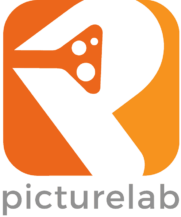Embedded marketing, also known as product placement, is a marketing technique that has taken various forms of content by storm. From movies to television shows, social media to video games, it has proven to be a successful strategy for boosting brand awareness, driving sales, and reaching target audiences. In this article, we’ll explore whether product placement in U.S. television shows will be as effective as it has been in other forms of content.
The Power of Product Placements:
Product placements have been around for decades, with many successful examples to refer to. Brands like Coca-Cola and Ford have seamlessly integrated their products into movies and TV shows, subtly promoting their offerings to viewers.
Reaching Target Audiences:
One of the most significant advantages of product placement is its ability to expose the brand or product to a specific target audience. Unlike traditional advertisements, which may reach a broad demographic, embedded marketing ensures that the message reaches the right people.
Boosting Brand Awareness and Sales:
When done right, product placements can lead to a significant boost in brand recognition and sales. Viewers often form positive associations with brands and their products when they see them used in the context of their favorite shows or movies.
Challenges and Considerations:
While product placements have been highly successful in various forms of content, their effectiveness in U.S. television shows is not guaranteed. Several factors need to be considered:
- Context is Key: The success of product placement in TV depends on the context. Brands must carefully select the shows that align with their image.
- The Amount of Exposure: The more a brand or product is featured, the better the results. However, overexposure can have a negative effect.
- Viewer Engagement: In order for product placements to work, viewers must be engaged with the content and the brand’s role in it.
Small Business and Product Placements:
Product placements are not limited to big-budget production companies. Even small businesses can use this marketing technique effectively. By carefully selecting the right content and negotiating compensation for the placement, small businesses can benefit from the exposure and reach their target audiences.
The Future of Product Placement in U.S. Television:
As the popularity of product placements continues to grow, we can expect to see more of them in U.S. television shows. With careful research, selection, and negotiation, advertisers have the opportunity to make product placements work effectively within their marketing strategy. The future of product placement in U.S. television shows looks promising, and it’s a strategy that businesses should consider when looking for ways to increase brand recognition and drive sales.
During a recent trip to Seoul, I realized how nice it was to watch a show on regular TV without any commercial interruptions. Korean networks rely heavily on embedded marketing, or Product Placement (PPL), for advertising revenue. Traditional commercials appear between programs, but don’t expect any bathroom breaks when watching your favorite hour-long drama or variety show.
There are quite a few things I miss about Korea, but commercial-less TV has to be ranked high on the list. I mean, how much of our lives do we lose watching commercials? How often do we skip a regular airing and just wait for it come out on Netflix or other Video on Demand (VOD) options?
Example: because I hate watching commercials, I don’t watch shows like The Walking Dead when it airs. I’m waiting for it on Netflix, which appears about a year after the season premiere.
So considering VOD and cable and all the other competition out there…
Why are there still commercial breaks in the United States?
Why isn’t there even one channel that’s free but has no commercial breaks?
First of all, let’s look at how brands benefit from PPL:
How is product placement different from a commercial?
Increased viewership at time of broadcast
I often wait for shows to appear online, which means I’m not watching the original airing and all the commercials that came with it. If there are no commercials, it’s more likely I’ll be watching at first broadcast and exposed to the brand’s embedded product.
The product is more impactful.
The star of the show is using the brand’s product in a scene. Can’t get any more powerful than that. In Korea, when an actress uses a brand’s lipstick or wears a certain scarf or whatever, that item sells out all over the world within minutes. A commercial may be memorable, but it doesn’t have the same level of impact. And if we’re watching the same commercial over and over again, it may actually get annoying.
PPL is forever, anywhere
Subway is crazy about product placement in Korean shows. I’ve seen many scenes where the main characters are holding Subway drinks and sandwiches.
I’m exposed to the Subway brand the first time I watch the show and again if I ever watch those shows again on VOD regardless of platform or where I’m at in the world. Even if the franchise itself disappears into oblivion, it will still be there. I would never know they had sponsored the show had they bought regular commercial time.
You can’t skip it
We skip over commercials when we can, or we simply take a bathroom or snack break. There’s a lot of commercials we don’t watch. PPL can’t be ignored. It’s there in the show.
Okay, now let’s look at some of the cons:
Need to do it right
If not integrated well, it looks silly at best, and disruptive at worst. Using Subway again, I’ve seen some very awkward scenes where our hero or heroine takes a trip to order a sandwich when it does nothing to progress the plot. When watching a PPL show, we are asking the audience to accept some weird shots of products or guys taking a swig of something without any explanation why. Especially these days, it takes a little more creativity to convince audiences and produce a positive response to the brand.
Commercials are more fun
Can’t imagine the Super Bowl without commercials. Often the ads are more fun and memorable than the game. A particularly good commercial can be multi-purposed and repeated whereas PPL can’t.
Commercials are all brand
A product in a scene may or may not be noticed. A commercial is all about the brand and nothing else.
So, back to the question, why are there still commercial breaks in the United States?
Of course, it’s a different culture with different expectations. In the States, you’re expected to tip 15 percent or more when eating out, and customers are OK with it. Could never work in Korea. Likewise, drivers in US yield to pedestrians. In Korea, you better watch out because cars won’t stop for you.
But wouldn’t Americans accept a few seconds of product in a scene in exchange for uninterrupted television?
The answer is yes, audiences would like that.
However, brands want their 30 seconds of me-me-me time. They don’t want to share it with anyone else. The networks cater to that. And there are still generations of audiences who grew up with commercial breaks and are OK with it.
Eventually, as VOD grows and newer generations of media consumers with different expectations have their say, this paradigm will shift.
Embedded marketing will be here in the United States eventually.
What do you think? Comment below.



